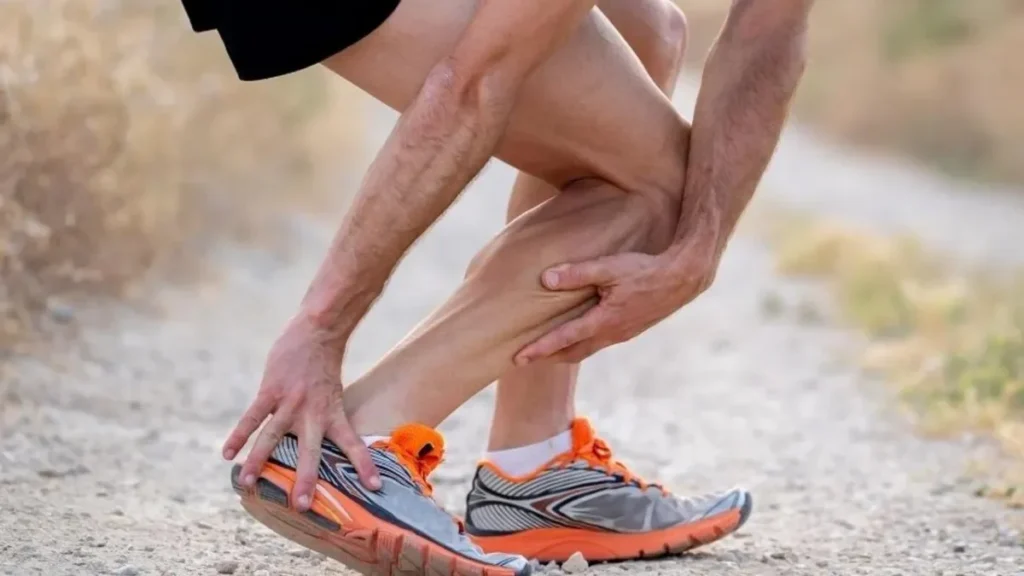How to Cure Achilles Tendonitis Fast: A Comprehensive Guide
Achilles tendonitis can be a debilitating condition, especially if you’re active or rely on mobility for work. The pain and stiffness that accompany this inflammation of the Achilles tendon can interfere with your daily routine and make exercise or even walking unbearable. While it’s essential to approach recovery with patience, there are strategies you can implement to speed up the healing process. This guide will walk you through the most effective steps to cure Achilles tendonitis quickly and get back to your normal activities.
Understanding Achilles Tendonitis
Achilles tendonitis occurs when the Achilles tendon, which connects your calf muscles to your heel bone, becomes inflamed due to overuse or strain. This can result from sudden increases in activity, improper footwear, or biomechanical issues such as flat feet or tight calf muscles. Symptoms include pain, swelling, stiffness, and difficulty flexing your foot.
Step 1: Rest and Reduce Activity
The first and most crucial step in curing Achilles tendonitis is giving your tendon time to heal. Continuing to put stress on the tendon will only worsen the condition and prolong recovery.
– Limit High-Impact Activities: Avoid running, jumping, or any activities that strain the Achilles tendon. If you must stay active, opt for low-impact exercises like swimming or cycling.
Step 2: Ice Therapy
Applying ice to the affected area can help to reduce pain. Use the following method:
– Apply Ice Packs: Wrap an ice pack in a thin towel and apply it to the Achilles tendon for 15-20 minutes, 2-3 times a day.
– Contrast Bath: Alternate between hot and cold water baths for your foot and ankle. This can improve circulation and reduce inflammation.
Step 3: Compression and Elevation
Compression and elevation are effective ways to control swelling, which is a common symptom of Achilles tendonitis.
– Compression: Use an elastic bandage or a compression sleeve around the ankle to reduce swelling.
– Elevation: Prop your foot up on a pillow or chair whenever you’re sitting or lying down to encourage fluid drainage from the tendon area.
Step 4: Gentle Stretching and Strengthening Exercises
Once the initial pain and swelling have subsided, it’s important to start gentle stretching and strengthening exercises to promote healing and prevent future injuries.
– Calf Stretch: Stand facing a wall, place your hands on the wall at shoulder height, and step back with the leg that has Achilles tendonitis. Keep your heel on the ground and your knee straight as you lean forward slightly. Hold for 20-30 seconds and repeat 3-5 times.
– Calf Heel Raises: Stand upright and hold onto a wall/table for balance if required. Slowly raise up onto your toes, and control the movement back down. Repeat as many times as you can until you feel your calf is getting tired or you experience discomfort.
Step 5: Use Anti-Inflammatory Medications
Over-the-counter nonsteroidal anti-inflammatory drugs (NSAIDs) such as ibuprofen or naproxen can help reduce pain and inflammation. However, they should be used sparingly and only as directed, as long-term use can have side effects.
Step 6: Consider a Rehabilitation Programme
If your Achilles tendonitis persists despite home treatment, seeing a podiatrist can be beneficial (see our blog post on Bio Mechanical Assessments) A podiatrist can provide you with a tailored exercise program, manual therapy, and modalities such as Extracorporeal Shockwave Therapy that can accelerate healing.
Step 7: Wear Proper Footwear and Consider Orthotics
Wearing shoes that support your arch and cushion your heel can make a significant difference in your recovery. Consider an arch support footwear style.
Your podiatrist can advise you regarding orthotics to help manage your symptoms.
Step 8: Gradual Return to Activity
Once your symptoms have significantly improved, and you have regained strength and flexibility, it’s important to gradually return to your usual activities.
– Start Slow: Begin with low-intensity activities and gradually increase the duration and intensity.
– Listen to Your Body: If you feel any pain or discomfort, scale back your activity to avoid re-injury.
Step 9: Consider Advanced Treatments
If conservative measures don’t bring relief, consult with a podiatrist about advanced treatment options. In certain cases surgery may be necessary to repair the tendon.
Conclusion
Achilles tendonitis requires a thoughtful approach to healing, emphasising rest, proper care, and gradual reintroduction to activity. While it may take several weeks to fully recover, following these steps can help you get back on your feet faster. Always listen to your body, and if symptoms persist or worsen, seek medical advice to ensure you’re on the right path to recovery.
Remember, while it’s tempting to rush back into your regular routine, giving your Achilles tendon the time it needs to heal fully will prevent further injury and ensure long-term health and mobility.

